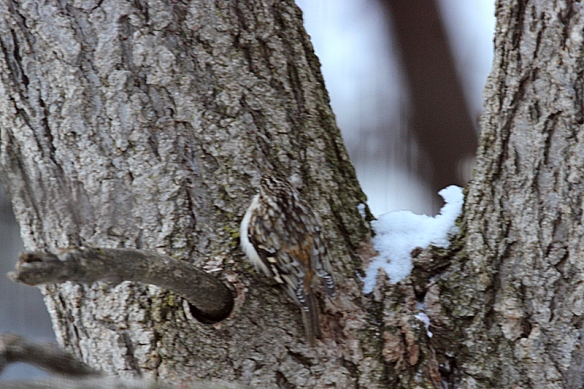Recently, I wrote a post about hiding in plain sight, but today I saw a much better example of this type of camouflage when a little Brown Creeper visited the Buckeye tree outside my sun porch window.

The Brown Creeper’s white breast feathers resemble the snow that still clings to some of the branches of the tree, and its mottled back feathers blend in perfectly with the bark.

Only slightly more obvious lower down on the tree, the bird spiraled its way up from the base of the tree, while poking into crevices along the way. I can’t imagine what it could find on a day like this when the temperature was -12 F (-24 C)
This tiny little bird weighs only half as much as a Chickadee. It’s hard to imagine how they survive the bitter cold winters of the northern Great Plains. I assume they do find some little critters in the cracks and crevices of the trees they explore. Eating just one tiny spider will sustain them for another few hours of foraging.
One naturalist wrote about them: “The Brown Creeper, as he hitches along the bole of a tree, looks like a fragment of detached bark that is defying the law of gravitation by moving upward over the trunk, and as he flies off to another tree he resembles a little dry leaf blown about by the wind.” Which is exactly what I saw today.



